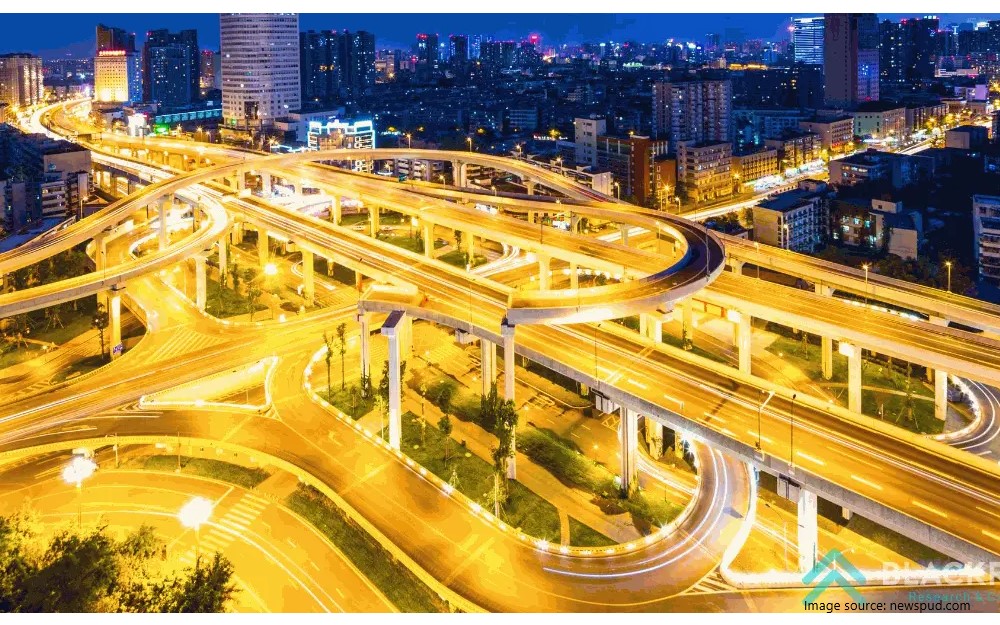
Australia is on the brink of an infrastructure revolution, with a $230 billion investment planned over the next five years. This unprecedented commitment will fund critical projects across transportation, energy, water, and social infrastructure, reshaping the nation’s cities, regions, and economy. The scale and scope of these investments underscore Australia’s dedication to addressing long-standing challenges while preparing for future growth.
Here’s a comprehensive look at how this $230 billion infrastructure boom will impact Australia and what it means for the nation’s development.
Why Now? The Drivers Behind the Investment
The decision to commit $230 billion to infrastructure comes at a pivotal moment for Australia. The country is grappling with population growth, urban congestion, and the effects of climate change. At the same time, the need for economic recovery following the COVID-19 pandemic has created an opportunity to use large-scale infrastructure projects as a catalyst for job creation and long-term economic growth.
Australia’s population is projected to exceed 30 million by 2032, intensifying demand for efficient transportation, housing, and utilities. Simultaneously, the global push for sustainability requires nations to rethink traditional infrastructure models, emphasizing renewable energy and green construction practices. The $230 billion investment reflects a strategy to future-proof Australia while ensuring it remains globally competitive.
Key Areas of Investment
Transportation
Transportation projects dominate the investment portfolio, aimed at reducing urban congestion and improving connectivity across Australia. High-profile initiatives include:
- Sydney Metro West: A multibillion-dollar project to create a fast rail connection between Sydney CBD and Greater Parramatta, reducing travel times and easing congestion.
- Inland Rail: A $14.5 billion freight corridor connecting Melbourne and Brisbane, designed to streamline supply chains and reduce reliance on road transport.
- Melbourne Airport Rail Link: A transformative project that will provide direct rail access to Melbourne’s airport for the first time, enhancing connectivity and supporting tourism.
These projects will not only improve urban mobility but also foster economic development in regional areas.
Energy and Sustainability
The transition to renewable energy is another major focus of the infrastructure plan. Key investments include:
- Snowy 2.0: A $5 billion project to expand Australia’s hydroelectric storage capacity, supporting renewable energy integration.
- Renewable Energy Zones (REZs): These zones, particularly in Queensland and New South Wales, will accelerate the deployment of wind and solar projects, ensuring Australia meets its net-zero carbon targets.
- Grid Modernization: Upgrades to the national energy grid will support renewable energy distribution, increasing efficiency and reliability.
Water Infrastructure
With droughts and water scarcity becoming more frequent, investments in water infrastructure are critical. Projects include:
- Murray-Darling Basin Plan: Continued investments to ensure sustainable water use in Australia’s agricultural heartland.
- Desalination Plants: Enhancing water security for urban centres like Sydney, Perth, and Adelaide.
Social Infrastructure
Education and healthcare will also see significant upgrades, including:
- The construction of new schools and the modernization of existing facilities to accommodate growing student populations.
- Hospital redevelopments, such as the $1.5 billion expansion of Melbourne’s Royal Children’s Hospital, aimed at improving healthcare accessibility and quality.
Economic and Social Benefits
The $230 billion infrastructure plan is expected to generate over 100,000 jobs, offering a lifeline to industries impacted by the pandemic. Construction, engineering, and manufacturing sectors will benefit directly, while related industries like logistics, retail, and technology will experience ripple effects.
Beyond economic growth, the infrastructure boom will improve quality of life for Australians. Reduced travel times, more reliable energy, and better access to education and healthcare are just some of the tangible benefits. Regional areas, often overlooked in past development cycles, will see enhanced connectivity and services, addressing long-standing inequalities between urban and rural communities.
Integrating Technology and Innovation
Australia’s infrastructure plan isn’t just about building more—it’s about building smarter. Technologies like digital twins, IoT, and artificial intelligence are being integrated to enhance efficiency, safety, and sustainability.
For example:
- Digital Twins: Virtual replicas of infrastructure assets are being used for real-time monitoring and predictive maintenance, reducing costs and downtime.
- Smart Cities: Urban projects include IoT-enabled systems for traffic management, energy efficiency, and waste reduction.
- Autonomous Transport: Pilot programs for self-driving buses and trains are being explored to future-proof Australia’s mobility solutions.
Challenges and Opportunities
While the $230 billion investment is transformative, it comes with challenges. Supply chain disruptions, skilled labour shortages, and escalating material costs could impact project timelines and budgets. Environmental concerns and community opposition to certain projects will also require careful management.
However, these challenges present opportunities for innovation. By fostering public-private partnerships and investing in workforce training, Australia can ensure the successful delivery of these projects while building a more skilled and resilient workforce.
A Legacy for Future Generations
The $230 billion infrastructure investment is more than a short-term economic stimulus—it’s a long-term vision for Australia’s future. These projects will position the nation as a leader in sustainable development, enhance its global competitiveness, and leave a legacy of modern, efficient infrastructure for generations to come.
From reducing carbon emissions to improving regional connectivity, the benefits of this investment will extend far beyond 2029. As these projects take shape, Australia is set to emerge stronger, more connected, and more sustainable than ever before.
With a focus on sustainability, innovation, and inclusivity, this infrastructure boom will transform cities, empower regions, and elevate the nation’s standing on the global stage. As construction begins on these monumental projects, Australians can look forward to a future defined by progress, resilience, and opportunity.
Testimonials
Very professional and efficient organization. Delivered a great product to a tight deadline.
ACE Power
Karl and the team are very professional and have a vast knowledge of BIM coordination.
Dwayne Willaims Babinda Electrics
We had multiple large projects with tight deadlines and needed a company we could trust. The teams delivery, attention to detail and understanding of what is being designed is always executed to a high standard.
Martin O’Donovan Envar Engineers
Draftech offered a flexible and reliable approach to working collaboratively with our team. They met our expectations and quality requirements and also offered up new ideas.
Draftech have proven to be a valuable and trustworthy resource and we will continue to work with Draftech on other projects.
Simon Marsden Umow Lai
Draftech is different from others in the professionalism and features they provide.
The ability to walk through projects in real time online provides invaluable insight into problem areas and helps provide an efficient resolution on the spot without many phone calls, emails and the necessity for us to paw through countless drawings to understand the issues.
Todd Morris Manager - Air mech
Draftech were put forward to FIP Electrical as the solution to Coordinate, Model, carry out clash detection, provide Electrical Services Shop Drawings, as built documentation and completed electrical model.
Simon Thorpe FIP Electrical
In close collaboration Draftech set up all our systems and model deliverables. In this process Draftech have proven to be a valuable resource for us and demonstrated commitment, understanding and professionalism.
David Skelley DJCoalition
Draftech’s attention to detail and proactive nature throughout the project assisted us in identifying issues before becoming evident on site, saving us both time and unexpected costs.
Matt Payne PJM Engineering Services
They delivered very high quality Revit models and associated 2D documentation at key milestones, working to a tight budget and in strict accordance with the Architects’ BIM requirements.
Peter Thomas Geoff Hesford
We found Draftech’s work to be of high standard and the team delivered exactly as agreed, in fact, when we considered the project complete, Draftech put further resources into the project as they were not satisfied.
John Johnson Beca
Engaging Draftech during design gave us the tools to make smart decisions.
Hansen Yuncken Design Manager - Michael Harkins
The drafting service is timely, reliable and fit for purpose for the built environment.
Peter Harvey Harvey Industries
Draftech stands apart from other drafting services that we have previously used in their attention to detail and ability to adapt to the individual client’s requirements.
Doug Holt McCaig Aircon
I can confidently recommend Draftech as a solid and reliable supplier, and experts in their field. I look forward to working with them again in the near future.
Chris Behan Norman Disney & Young
After seeing the benefits Draftech provided us on the Townsville Hospital Redevelopment we have set up a relationship with Draftech and intend to continue to use their BIM knowledge and skills for our future projects.
Brad Lund Energy Power Systems
Draftech has no competition as they are in a class of their own.
John Boyes Babinda Electrics
Draftech Developments Drafting and Design Capabilities, in conjunction with their outstanding level of Client service and support has provided great solutions to our engineering and Drafting Design portions within our Gorgon Barrow Island Project.
Aaron Hazelton Applied Electro Systems Pty Ltd
Draftech set up necessary systems and workflows very quickly, but also setup auditable estimating and weekly cost tracking processes that we utilised, requiring little maintenance.
TOM PURDON MPM GROUP




























